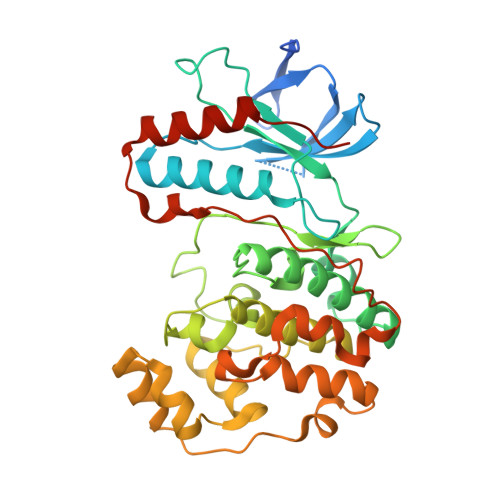In Silico Identification of a Novel Hinge-Binding Scaffold for Kinase Inhibitor Discovery.
Wang, Y., Sun, Y., Cao, R., Liu, D., Xie, Y., Li, L., Qi, X., Huang, N.(2017) J Med Chem 60: 8552-8564
- PubMed: 28945083
- DOI: https://doi.org/10.1021/acs.jmedchem.7b01075
- Primary Citation of Related Structures:
5XYX, 5XYY, 5XYZ - PubMed Abstract:
To explore novel kinase hinge-binding scaffolds, we carried out structure-based virtual screening against p38α MAPK as a model system. With the assistance of developed kinase-specific structural filters, we identify a novel lead compound that selectively inhibits a panel of kinases with threonine as the gatekeeper residue, including BTK and LCK. These kinases play important roles in lymphocyte activation, which encouraged us to design novel kinase inhibitors as drug candidates for ameliorating inflammatory diseases and cancers. Therefore, we chemically modified our substituted triazole-class lead compound to improve the binding affinity and selectivity via a "minimal decoration" strategy, which resulted in potent and selective kinase inhibitors against LCK (18 nM) and BTK (8 nM). Subsequent crystallographic experiments validated our design. These rationally designed compounds exhibit potent on-target inhibition against BTK in B cells or LCK in T cells, respectively. Our work demonstrates that structure-based virtual screening can be applied to facilitate the development of novel chemical entities in crowded chemical space in the field of kinase inhibitor discovery.
- National Institute of Biological Sciences, Beijing , No. 7 Science Park Road, Zhongguancun Life Science Park, Beijing 102206, China.
Organizational Affiliation:

















